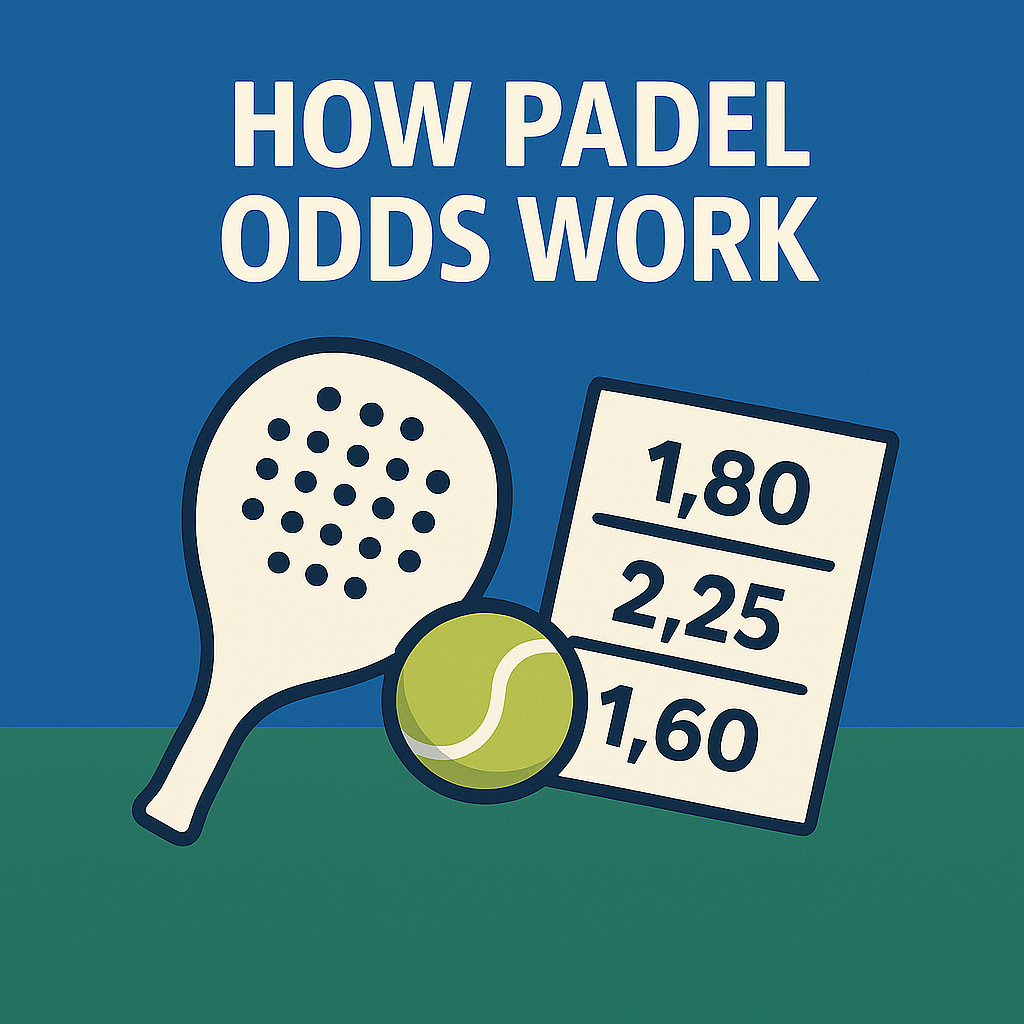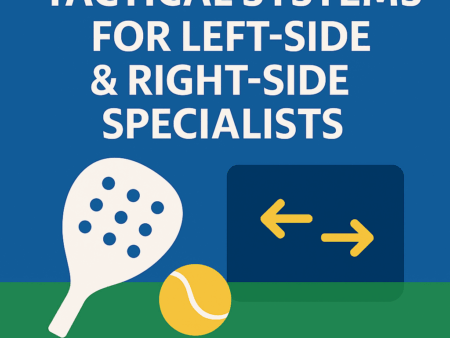
Understanding padel odds is one of the most important foundations of smart betting. This guide breaks down how odds work, the different formats used, and the real factors bookmakers consider when setting lines.
By the end, you’ll know exactly how to interpret odds and spot value opportunities.
🟦 What Are Padel Betting Odds?
Padel odds represent the probability of an outcome happening — expressed in a format that determines how much profit you win.
Example: Odds of 1.50 imply a higher chance of winning than odds of 3.00.
Simply put:
- Low odds = favourite
- High odds = underdog
🟩 Why Odds Matter
Odds matter because they tell you:
- How likely the bookmaker thinks a pair is to win
- How much money you’ll receive for a winning bet
- Whether a line offers value (your estimated probability vs theirs)
To be profitable long-term, you must understand what odds represent.
🟨 The 3 Types of Betting Odds
Bookmakers typically use three formats. The meaning is the same — only the expression differs.
1. Decimal Odds (EU Odds)
Popular in Europe & LATAM.
Example: 1.80
- A €10 bet returns €18 total (profit €8).
Formula:
Profit = (Stake × Odds) – Stake
2. Fractional Odds (UK Odds)
Example: 5/2
- For every 2 wagered, you win 5.
Equivalent to decimal 3.50.
3. American Odds (Moneyline)
- Positive odds (+150) → Profit on a €100 stake.
- Negative odds (-150) → Stake required to win €100.
Padel is mostly offered in decimal format globally.
🟧 Implied Probability (The Key Concept)
Every set of odds hides the bookmaker’s estimated probability.
Formula:
Implied Probability = 1 / Decimal Odds
Example: Odds of 1.25 = 80% probability. Example: Odds of 2.50 = 40% probability.
Beginner mistake: Thinking odds reflect true probability. They don’t — they reflect the bookmaker’s model + margin.
🟫 The Bookmaker Margin (The Hidden Cost)
Bookmakers build a margin into every market to guarantee profit.
Example: If two teams each have a true 50% chance, true odds should be 2.00.
But most padel markets display something like:
- Team A: 1.83
- Team B: 1.83
This adds up to 109% — meaning 9% is the bookmaker margin.
Understanding margin helps you compare betting sites.
🟥 How Bookmakers Set Padel Odds
Bookmakers analyse:
- Player form
- Rankings
- Head‑to‑head data
- Serving and returning efficiency
- Indoor vs outdoor
- Court speed
- Pair chemistry
- Injury rumours or pair changes
Their models update live during matches.
This explains why odds swing dramatically during in-play betting.
🟦 Factors That Move Odds (Line Movement)
Odds change because of:
- Heavy betting on one side
- Line adjustments based on new information
- Live performance shifts
- Weather changes (huge for outdoor padel)
- Injuries or medical timeouts
Watching line movement is a powerful way to spot value.
🟩 Understanding Value in Padel Odds
Value = when your predicted probability is higher than the bookmaker’s implied probability.
Example:
- Bookmaker odds: 2.20 (45.4% implied)
- Your model suggests 55%
This is an excellent value bet.
Long-term profitability comes from finding value — not predicting winners.
🟨 Real Padel Example
A top pair is listed at 1.40.
- Implied probability = 71.4%
But if they struggle in windy conditions and it’s an outdoor match, their true chance may be closer to 60%.
This mismatch creates opportunity.
🟧 Common Mistakes When Reading Odds
Beginners often:
- Confuse low odds with guaranteed wins
- Ignore bookmaker margins
- Fail to calculate implied probability
- Bet favourites without analysis
- Misread live odds swings
Odds are a guide — not a guarantee.
🟩 Summary
Padel odds show the bookmaker’s estimated probability for each outcome. By understanding formats, implied probability, line movement, and margin, you’ll be in a far stronger position to identify profitable opportunities.
This page forms the core foundation for all future betting strategy pages.


